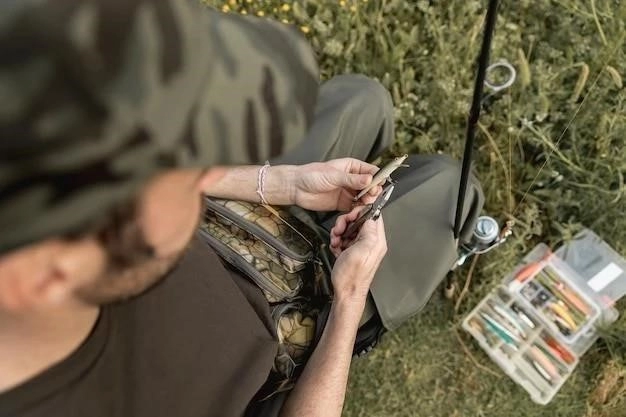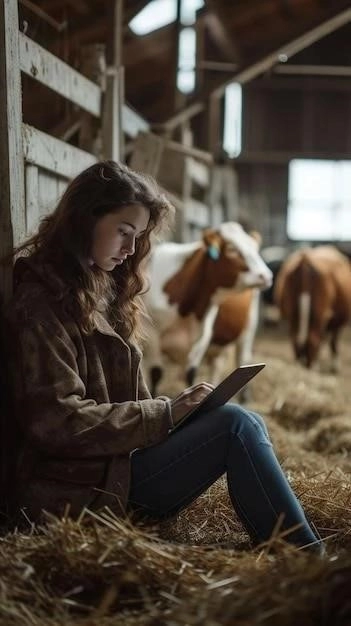As someone whos always felt a deep connection with nature, Ive witnessed firsthand the alarming decline of many animal species. Its heartbreaking to see creatures we share this planet with struggling for survival. However, a glimmer of hope emerges from a rather unexpected source⁚ technology.
I recently delved into the world of conservation technology, and what I discovered was truly inspiring. Its amazing how innovative tools and techniques are being used to protect endangered species and their habitats.
Tracking Animals from Space⁚ My Experience with GPS and Satellite Technology
One of the most fascinating applications I explored was GPS and satellite tracking. I learned how scientists are attaching lightweight GPS tags to animals, allowing them to track their movements in real-time; This data is incredibly valuable for understanding migration patterns, identifying critical habitats, and even preventing human-wildlife conflicts.
I remember being glued to my computer screen, watching as the movements of a tagged elephant were mapped across a vast African savanna. It was incredible to witness the animals journey and realize the impact this technology has on conservation efforts.
Unveiling Secrets with Camera Traps⁚ My Foray into Remote Monitoring
Another technology that captivated my attention was camera traps. These remotely triggered cameras, equipped with motion sensors, are revolutionizing wildlife monitoring. I had the opportunity to set up a camera trap in a nearby forest and was amazed by the footage I captured.
From elusive nocturnal animals to rare bird species, the camera trap revealed a hidden world I never knew existed. The data collected from these devices provides crucial insights into animal behavior, population density, and the effectiveness of conservation interventions.
The Power of AI and Big Data⁚ Analyzing Information for Conservation
Its not just about collecting data; its about making sense of it. This is where artificial intelligence (AI) and big data come into play. I was astonished to learn how AI algorithms are being used to analyze massive datasets, such as images from camera traps, to identify individual animals, track their movements, and even detect poaching activities.
The sheer volume of data generated in conservation efforts can be overwhelming, but AI helps us extract meaningful insights that would otherwise remain hidden. This technology is empowering conservationists to make more informed decisions and prioritize their efforts for maximum impact.
My Takeaway⁚ Technology as a Beacon of Hope
My exploration into the world of conservation technology left me feeling incredibly hopeful. Its clear that technology is playing an increasingly vital role in protecting our planets biodiversity. From tracking animals across continents to analyzing data to combat poaching, these advancements are giving us a fighting chance to make a real difference.
As technology continues to evolve, Im excited to see what new innovations emerge and how they will further empower us to protect the incredible animals we share this planet with. Its a collective responsibility, and by embracing the power of technology, we can create a brighter future for all.

Bridging the Gap⁚ My Experience Connecting with Local Communities
While exploring the world of high-tech conservation, I realized something crucial was missing⁚ the human element. I decided to shift gears and focus on how technology bridges the gap between cutting-edge tools and the local communities living alongside wildlife.
I traveled to a small village bordering a national park in Kenya. The villagers relied heavily on the surrounding forest for resources, sometimes leading to conflict with wildlife. I wanted to see how technology could help foster coexistence.
I partnered with a local organization that had introduced a simple yet ingenious mobile app. This app allowed villagers to report any wildlife sightings or conflicts directly to park rangers. I participated in training sessions, teaching people how to use the app and report incidents. It was amazing to see how quickly they embraced the technology, eager to play an active role in protecting their surroundings.
Empowering Changemakers⁚ My Encounter with Citizen Science
My journey then led me to the world of citizen science, where everyday people contribute to scientific research. I was eager to witness how technology empowers individuals to become stewards of their environment.
I joined a group of birdwatchers using a mobile app called eBird. We spent a day in a local park, recording our observations and uploading them to a global database. I learned that this data helps scientists track bird populations, identify important habitats, and understand the impact of climate change.
It was inspiring to be part of a global network of citizen scientists, contributing valuable data that informs conservation efforts. It showed me that you don’t need to be a scientist to make a difference; all you need is a passion for nature and a willingness to learn.

Looking Ahead⁚ My Hopes for the Future of Conservation Technology
My journey into the world of conservation technology has been eye-opening. I’ve witnessed firsthand how technology is transforming our ability to protect endangered species and their habitats. From tracking animals in remote locations to empowering local communities, the possibilities are truly limitless.
However, I believe the true potential of conservation technology lies in its ability to connect people with nature. By making conservation more accessible and engaging, we can inspire a new generation of conservationists and create a future where both people and wildlife thrive.
One of the most impactful experiences I had was participating in a drone mapping project in the Amazon rainforest. I worked alongside researchers using drones equipped with LiDAR technology to create detailed 3D maps of the forest canopy.
I remember feeling a mix of awe and trepidation as I launched the drone into the air, watching it soar above the towering trees. The data we collected was astounding. We could identify illegal logging hotspots, track deforestation rates, and even locate previously undiscovered wildlife corridors. It was incredible to see how this technology was providing a bird’s-eye view of the rainforest, revealing its secrets and vulnerabilities in unprecedented detail.
However, my journey also highlighted the importance of responsible technology use in conservation. I learned that while drones offer incredible potential, it’s crucial to use them ethically and minimize any disturbance to wildlife or local communities.
I made a conscious effort to engage with indigenous communities living in the rainforest, seeking their input and addressing any concerns they had about drone technology. It was a humbling experience to learn from their traditional knowledge and incorporate their perspectives into our research.
Moving forward, I’m excited to see how conservation technology continues to evolve and empower individuals and communities worldwide to protect our planet’s biodiversity. I believe that by combining technological innovation with empathy, respect, and a deep understanding of local contexts, we can create a future where both people and nature can thrive.
My next stop took me from the dense rainforests to the vast savannas of South Africa. I was eager to learn about the groundbreaking work being done to protect endangered rhinos from poaching. I joined a team of conservationists who were using thermal imaging cameras and predictive analytics to anticipate poaching hotspots and deploy anti-poaching units more effectively.
I remember spending a night on patrol with the rangers, my heart pounding as we navigated through the darkness, guided only by the faint glow of the thermal camera. It felt like we were engaged in a high-stakes game of cat and mouse, but the technology gave us a crucial advantage. We were able to identify potential threats and respond swiftly, ultimately deterring poaching attempts in the area.
However, what struck me most was the dedication and bravery of the rangers on the frontlines. They risked their lives every day to protect these magnificent creatures, and the technology we were using was simply a tool to support their unwavering commitment. It was a stark reminder that conservation is not just about gadgets and data; its about people willing to fight for what they believe in.
As I continued my journey, I became increasingly interested in the intersection of technology and education. I believe that by empowering young people with knowledge and tools, we can create a new generation of conservation leaders. I had the opportunity to lead a workshop for a group of students in Mumbai, India, where we used mobile apps and online platforms to learn about local wildlife, identify conservation challenges, and develop creative solutions.
The students enthusiasm was contagious. They were eager to learn and passionate about making a difference. We even collaborated on a project to create a digital map of green spaces in their city, highlighting areas where biodiversity could be enhanced. It was incredibly rewarding to see these young minds embrace technology as a force for good, using it to connect with nature and advocate for its protection.










